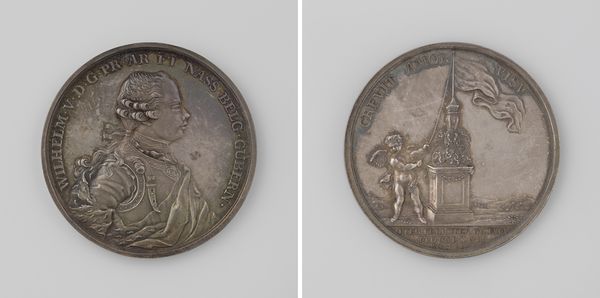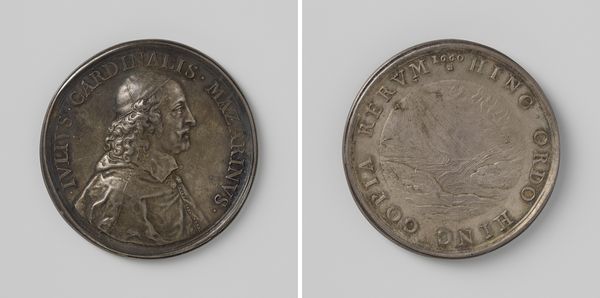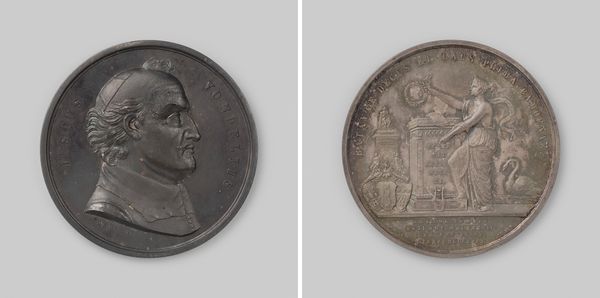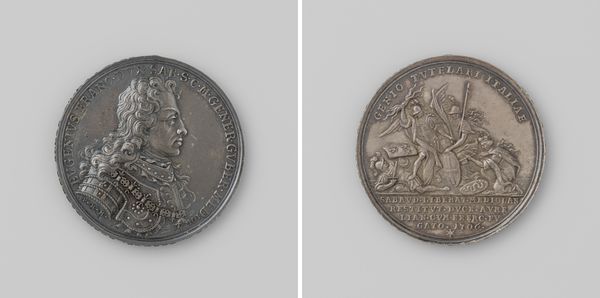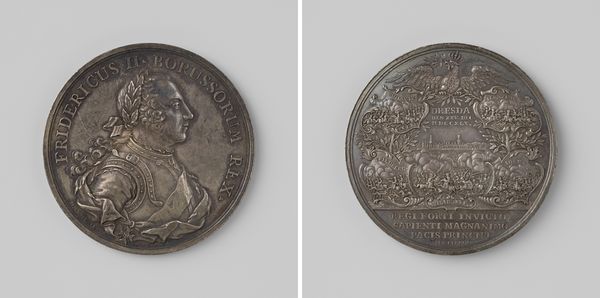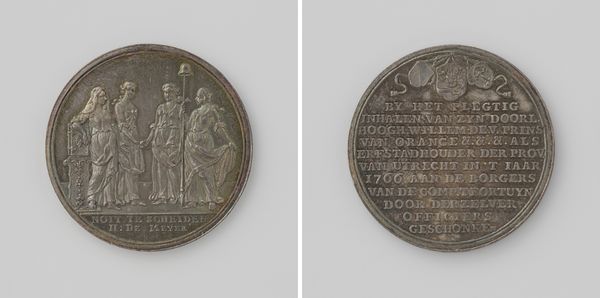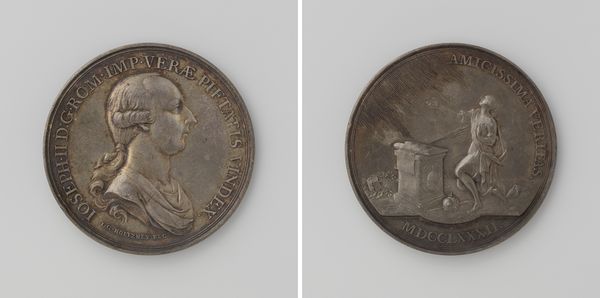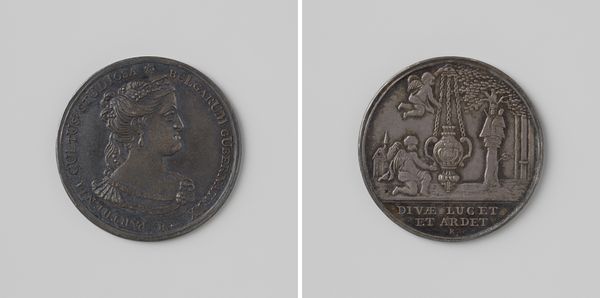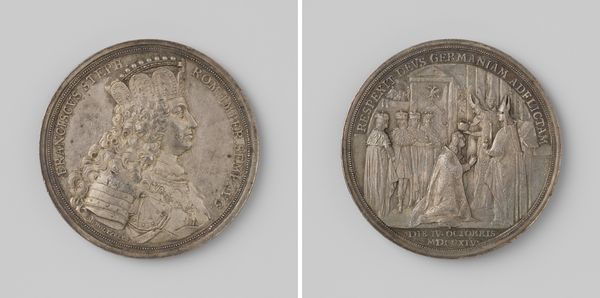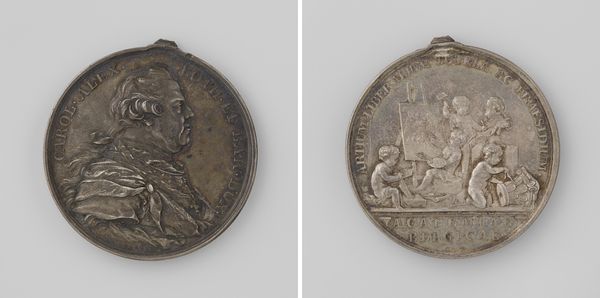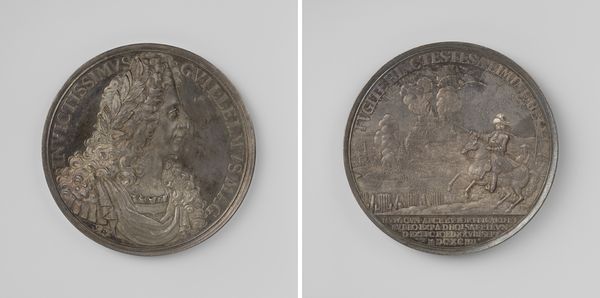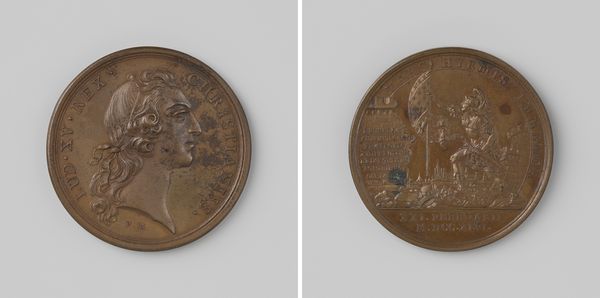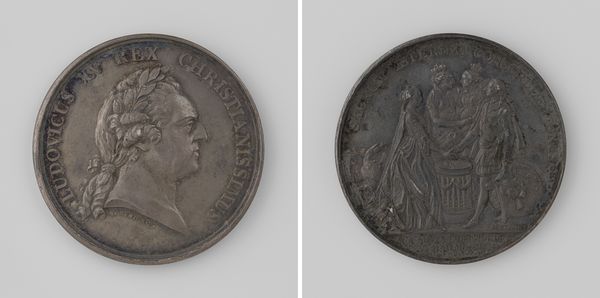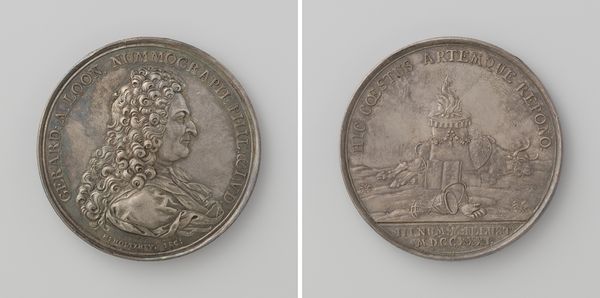
Overlijden van Gerard, baron van Swieten, hofarts en hervormer van de geneeskundige faculteit te Wenen 1772
0:00
0:00
Dimensions: diameter 5 cm, weight 43.62 gr
Copyright: Rijks Museum: Open Domain
Curator: Let’s turn our attention to this intriguing piece. It’s a relief made around 1772 by Anton Franz Widemann. The full title is “Overlijden van Gerard, baron van Swieten, hofarts en hervormer van de geneeskundige faculteit te Wenen.” It seems to be made of metal or ceramic. Editor: My first impression is that it's quite austere for something commemorating a baron's death, a bit formal perhaps. The style feels very Baroque, even though the Baroque period was waning at this time. Curator: Yes, the commemorative medal was quite a common form in the 18th century. This one celebrates Gerard van Swieten, a Dutch physician who reformed the medical faculty in Vienna. This was an era where the rise of meritocracy demanded public acknowledgement through medals like this, thus solidifying his social and professional contributions in public memory. Editor: Absolutely. I am interested in the choice to render his death not as some melodramatic scene, but as a rather civic acknowledgement, reinforcing ideas of rational thought and enlightenment that he probably espoused in his practice. Curator: Notice how on one side we have a portrait of Van Swieten himself. The inscription identifies him with various titles he held, a way of highlighting his status and achievements. The reverse features an allegorical scene referencing his intellectual legacy. The inclusion of a bust and cherubic figures adds a layer of glorification to the achievements he accumulated. Editor: Right. It really speaks to how power operates through imagery. It suggests a specific narrative of enlightenment ideals while possibly obscuring other aspects of his life and social impact. How might these types of commemoration served to legitimize the ruling elite and those affiliated? Curator: That's a critical point. Commemorative art like this was undeniably entwined with social hierarchies. By portraying individuals such as Van Swieten in such a distinguished manner, it helped to propagate and legitimize the established power structures. Editor: And so we come face-to-face with a reminder that these visual representations always serve very specific roles in how society self-constructs a collective memory of influential people. Curator: Precisely. This piece is not merely a memento of a life, but also a strategic construction within a wider societal framework. Editor: It is amazing how such a tiny little relief is capable of generating discussion around very real dynamics concerning who and how history remembers important actors and their societal roles.
Comments
No comments
Be the first to comment and join the conversation on the ultimate creative platform.
